

Are you struggling to align your HR initiatives with your organization’s overall purpose while keeping your team motivated and on track?
In today’s dynamic business environment, HR professionals face the ever-present challenge of not only attracting and retaining top talent but also ensuring that every employee understands and contributes to the larger mission of the company. In this Practical Examples of Organizational Goals blog, we will explore the critical relationship between vision and reality by examining how organizational goals can be transformed into practical actions. We will discuss organizational goals examples, share examples of organizational objectives, and delve into the definition of organizational goals.
Whether you are a fresher stepping into the HR world or an experienced professional, this guide will provide clear, real-time insights on how to achieve organizational goals and align them with the goals and objectives of an organization.
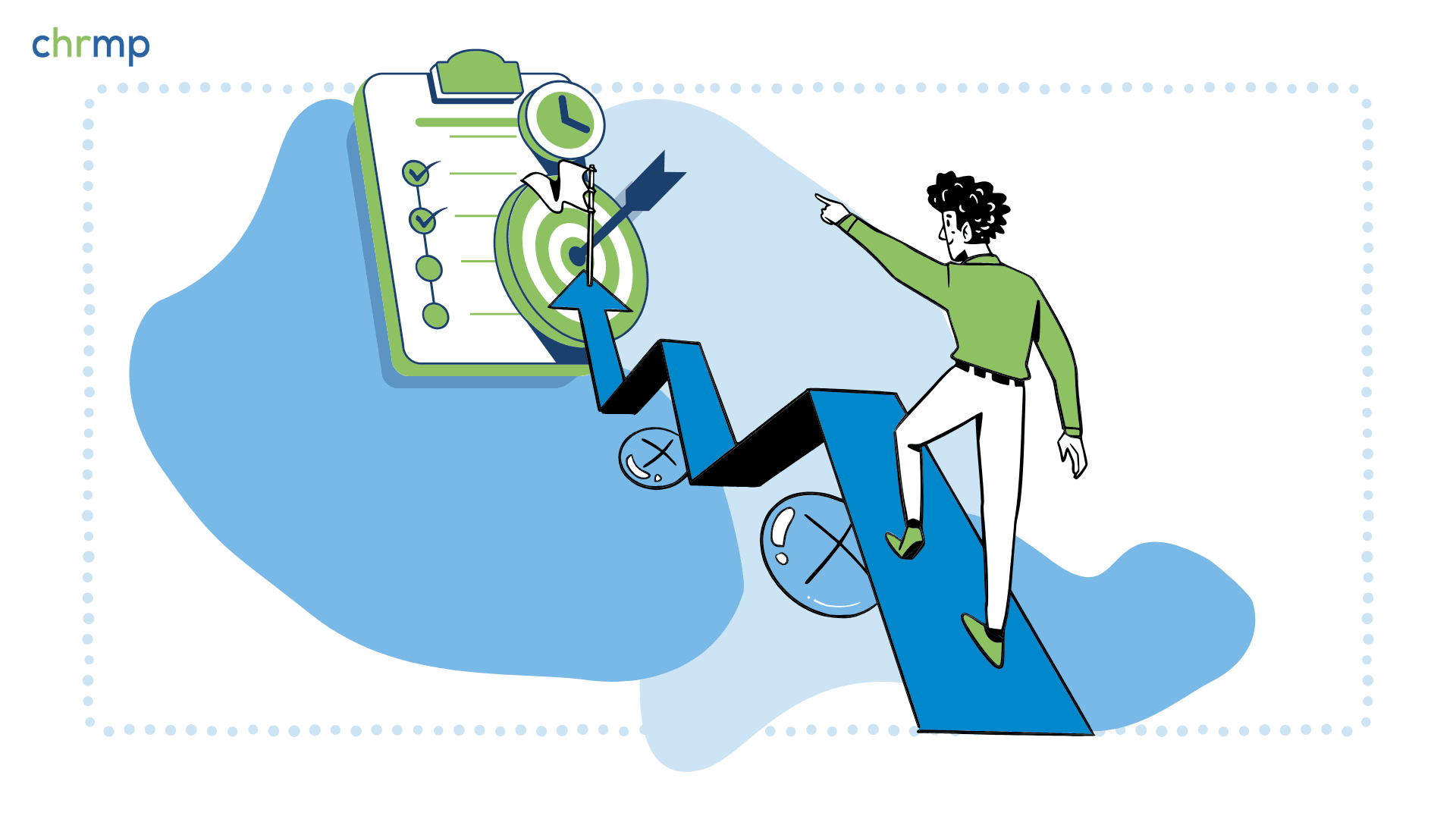
At its core, organizational purpose is what drives every business. It answers the fundamental question: Why does this organization exist? This purpose is not just a lofty statement on a wall; it sets the tone for every strategic decision and operational process within the company. When we talk about the purpose of a business organization, we refer to the guiding principles that shape its strategies, culture, and day-to-day operations.
Organizational goals are the clearly defined, measurable targets that an organization sets to achieve its long-term vision. These targets help companies navigate through complex business landscapes by breaking down their vision into actionable steps.
Similarly, objectives of an organization are the specific, short-term outcomes that pave the way toward achieving these broader goals. For instance, an example of organizational objectives might include increasing employee engagement by 10% within a year or launching a new training program to improve leadership skills.
HR is the heartbeat of an organization, responsible for shaping its culture, recruiting talent, and ensuring that employees remain aligned with the company’s mission. When HR professionals understand the goals of a business organization and the objectives of a business organisation, they are better positioned to:
For example, if one of the goals of business organization is to become a market leader in innovation, HR can introduce creative problem-solving workshops and reward innovative ideas through recognition programs. Such initiatives not only boost morale but also ensure that every team member is actively contributing towards achieving the set objectives.
Let’s consider some organizational goals examples to better understand how these principles are applied in real-life scenarios:
An organization might set a goal to increase employee engagement by 15% over the next year. The objectives of an organization to support this goal could include launching an internal communication platform, organizing regular team-building activities, and implementing a feedback system that values employee input. By tracking engagement scores and gathering data through regular surveys, HR can demonstrate progress and adjust strategies as needed.
A tech company may have a strategic goal to lead the market in innovation. To achieve organizational goals, the company could focus on reducing the time it takes to move from concept to prototype by 20%. The example of organizational objectives here might include streamlining product development processes, investing in research and development, and fostering a culture of continuous improvement through regular hackathons and brainstorming sessions.
For a retail organization, one of the goals of a business organization might be to enhance customer satisfaction ratings by 10% within six months. The corresponding objectives of a business organisation may involve training frontline employees in customer service best practices, implementing new customer feedback tools, and reviewing the customer service process to identify areas for improvement.
Data is the lifeblood of modern HR management. By utilizing analytics, HR can monitor progress toward organizational goals and make informed decisions to improve outcomes. Consider the following real-time examples:
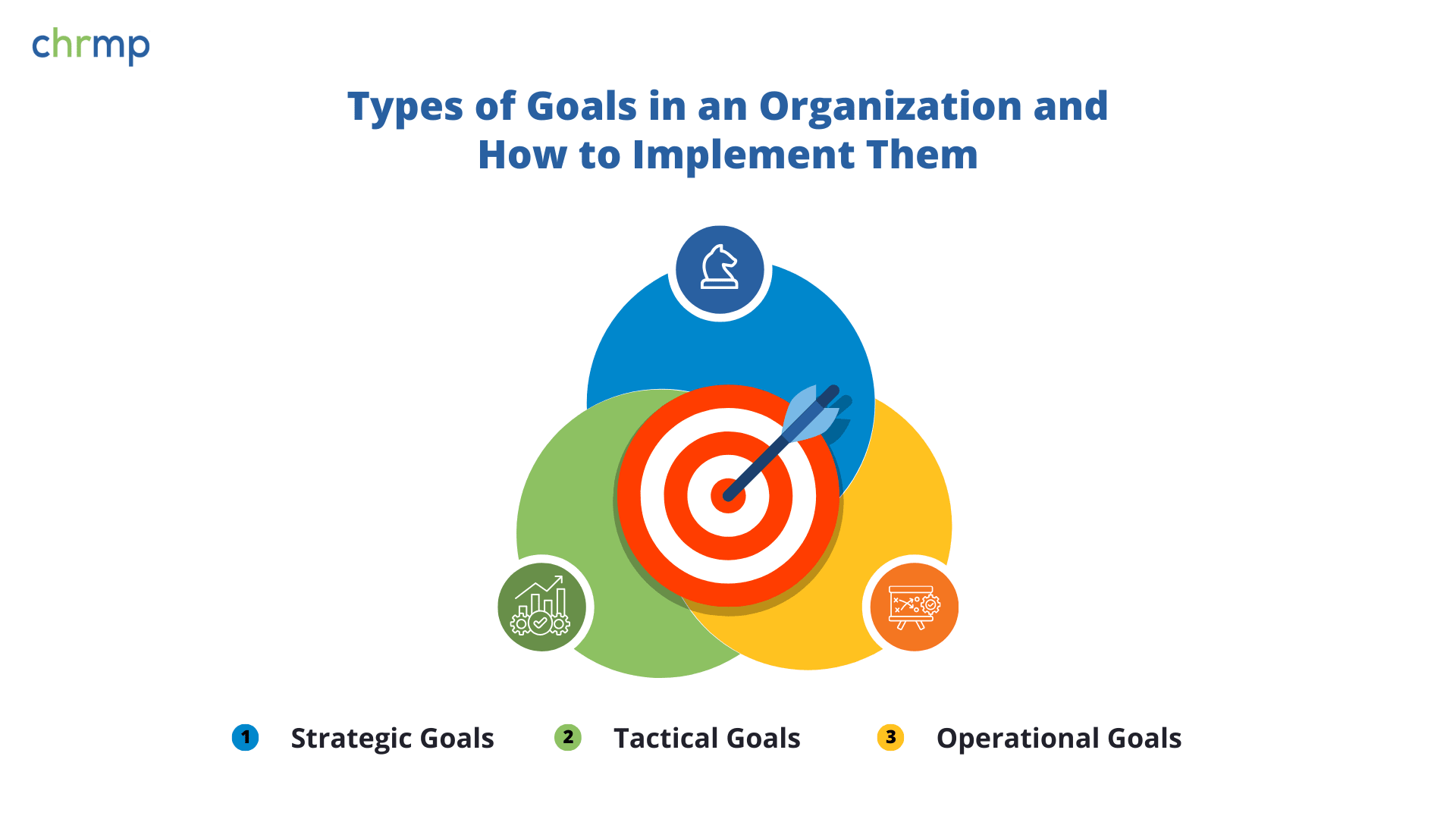
Understanding the types of goals in organization is essential for HR professionals to tailor their strategies effectively. Here are some common types:
These are long-term goals that define the direction and overall purpose of the organization. For example, a company might set a strategic goal to become the market leader in sustainable practices. HR can support this by integrating sustainability into the company culture, offering training on green practices, and rewarding sustainable innovations.
Tactical goals are more focused and typically involve the implementation of strategies over a medium-term period. These might include objectives like reducing recruitment costs by a specific percentage or improving the efficiency of the onboarding process. HR can implement tactical goals by refining recruitment processes, leveraging technology for better candidate tracking, and training hiring managers to identify top talent effectively.
These are short-term, day-to-day goals that ensure the smooth functioning of the organization. Examples include meeting monthly recruitment targets, maintaining high employee satisfaction levels, or ensuring compliance with industry standards. HR plays a crucial role in establishing clear metrics and performance standards to monitor the objectives of an organization examples on an ongoing basis.
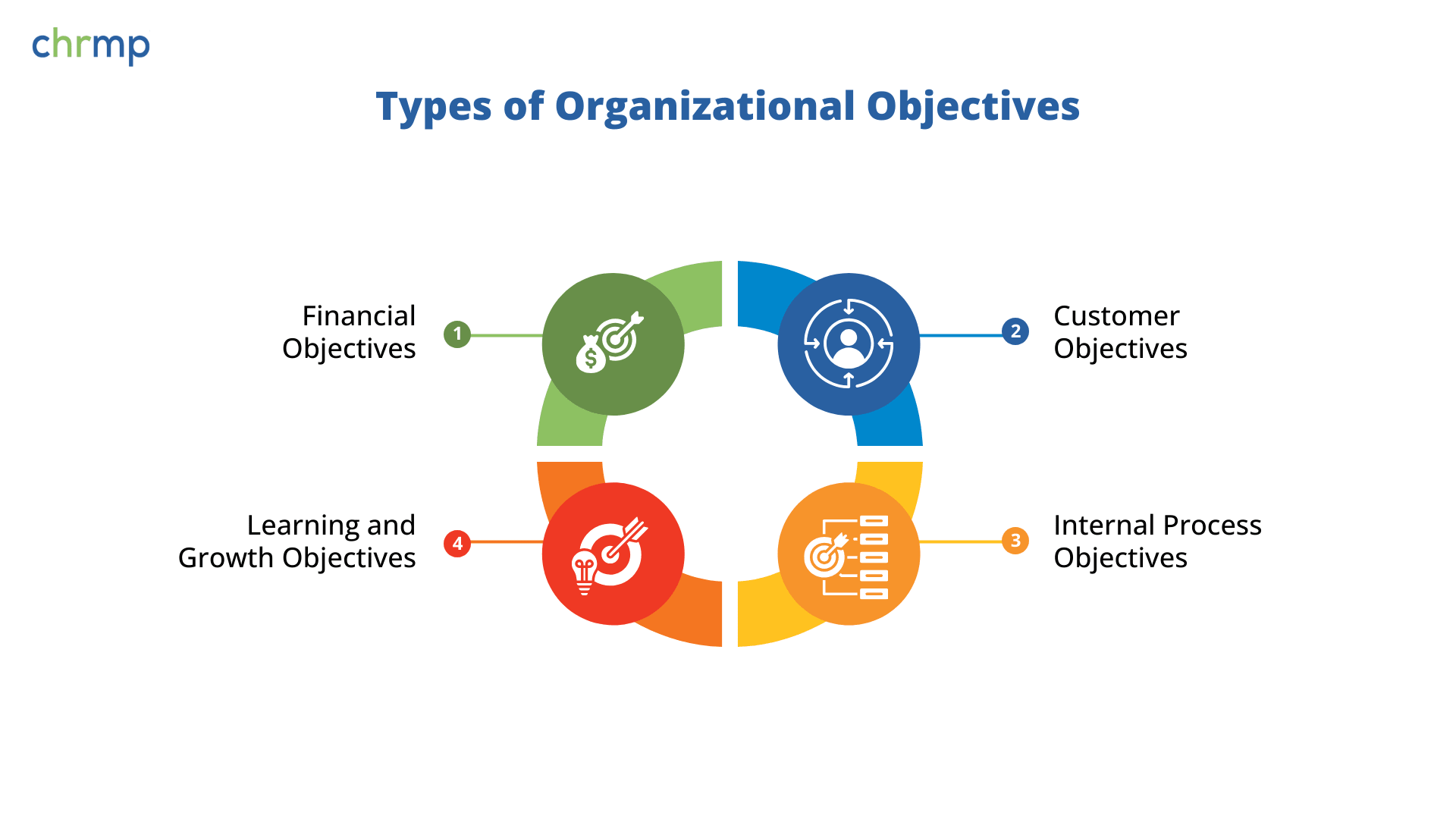
In addition to the various types of goals in organization, it’s also important to recognize the types of organizational objectives. These include:
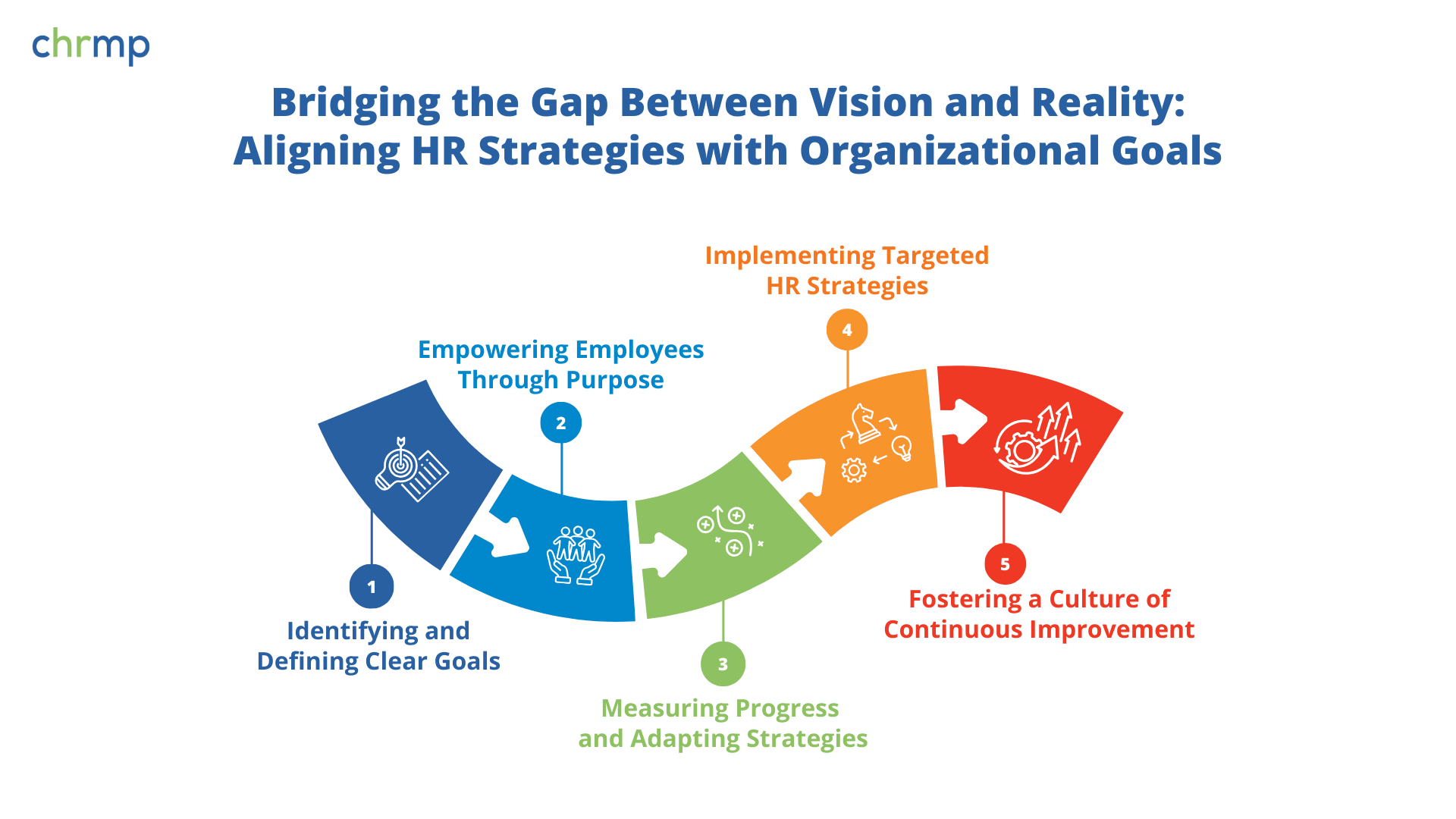
For HR professionals, transforming abstract ideas into measurable, actionable steps is key to turning vision into reality. This process begins with a clear definition of organizational goals and cascades into every strategic decision, ensuring that the leadership’s vision is mirrored in daily operations.
Start by establishing a comprehensive definition of organizational goals. Understand the long-term aspirations of the business and break these down into actionable objectives of an organization that serve as the building blocks for success. When goals and objectives are clearly articulated, every employee can see how their contributions drive the broader purpose of a business organization.
When employees grasp the organizational purpose and understand how their work impacts the goals of a business organization, they become more engaged and motivated. Real-world success stories—whether focused on boosting customer satisfaction or driving innovation—act as inspiration for an organization . This sense of ownership fuels a proactive mindset, encouraging individuals to consistently work toward the company’s strategic targets.
The journey from vision to reality requires diligent tracking of progress. Utilize performance metrics, regular check-ins, and data-driven insights to assess how well the team meets its objectives of business organisation. Transparent tracking not only celebrates incremental wins but also helps identify areas needing adjustment. In today’s fast-paced business environment, it is essential to remain agile. The types of goals in an organization may evolve, and HR must continuously refine the objectives of an organization to stay aligned with changing business needs.
Effective HR strategies are the bridge that connects vision with operational reality. Begin with clear, frequent communication using town halls, newsletters, and team meetings to ensure everyone understands the goals and objectives of an organization. Set specific, measurable targets—such as reducing turnover by 5% in a year—to provide clear direction. Develop targeted training programs that address the skills needed to meet these goals, whether it’s through creative problem-solving workshops or agile methodology training. Leveraging HR analytics and technology further enables proactive monitoring and adjustment of initiatives, ensuring that efforts are always aligned with the overall strategy.
Finally, encourage a culture where feedback is valued and acted upon. Regular surveys and focus groups offer crucial insights into how well HR initiatives support the strategic vision. By integrating continuous improvement into the HR framework, organizations can maintain alignment with their evolving types of organizational objectives and ultimately achieve their long-term goals.
When HR successfully aligns its strategies with the goals and objectives of an organization, the impact on the organizational culture is profound. Here’s how:
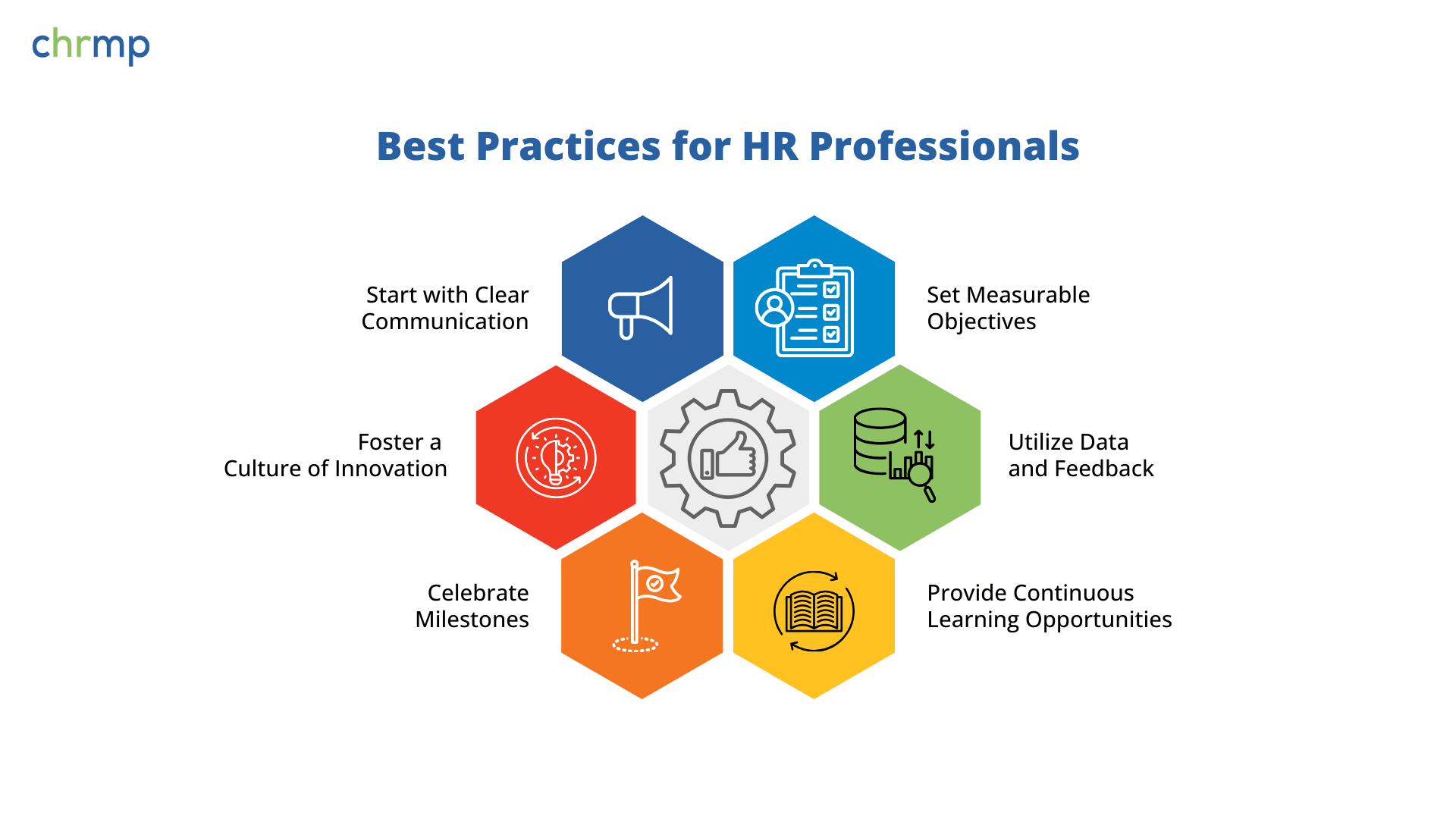
To wrap up, here are some actionable tips for HR professionals looking to integrate these concepts into their daily operations:
1. Start with Clear Communication: Regularly discuss the organizational goals in team meetings and through internal communications. Use simple language to explain the definition of organizational goals and how each role contributes to the broader mission.
2. Set Measurable Objectives: Break down large goals into smaller, manageable objectives of an organization. Ensure these objectives are clear, quantifiable, and directly linked to the goals and objectives of an organization.
3. Utilize Data and Feedback: Regularly gather data through employee surveys and performance metrics. Use this information to refine and adjust your strategies, ensuring that you continuously achieve organizational goals effectively.
4. Provide Continuous Learning Opportunities: Invest in training programs that align with the objectives of business organisation. Whether it’s soft skills or technical training, ensure that every learning initiative supports the goals of business organization.
5. Celebrate Milestones: Recognize and celebrate small wins along the way. Highlight organizational goals examples within the company and share success stories to keep the momentum going.
6. Foster a Culture of Innovation: Encourage employees to share their ideas and solutions. When individuals see that their contributions directly impact the organizational purpose and the objectives of an organization, it fuels creativity and continuous improvement.
Transforming a company’s vision into actionable goals is not just a theoretical exercise—it’s a practical necessity that drives real-world results. As HR professionals, you have the unique opportunity to bridge the gap between strategy and execution. By focusing on clear organizational goals, setting measurable objectives of an organization examples, and continuously engaging with your teams, you can create a work environment where every employee is committed to the purpose of business organization.
If you are ready to enhance your HR strategies and take a proactive role in shaping the future of your organization, start by reviewing your current practices. Ask yourself:
The answers to these questions can be the first steps towards a more cohesive, motivated, and forward-thinking workplace.
Join our HR Certification program today to gain deeper insights into aligning HR strategies with organizational vision. Equip yourself with the tools and knowledge needed to drive change and ensure that your organization not only sets high goals but also achieves them. Embrace the journey from vision to reality and become a catalyst for organizational success.
By following these practices and continuously striving to connect everyday actions with the broader strategic vision, you can ensure that your organization remains agile, innovative, and competitive in today’s ever-changing business landscape. Remember, every great achievement begins with a clear purpose and a set of actionable goals—now, it’s your turn to lead the way!
Ready to take your HR expertise to the next level? Enroll in our HR Certification program now and start transforming vision into reality!

© 2007-2025 CHRMP| All Rights Reserved | Powered by Ripples Learning & Research Private Limited
